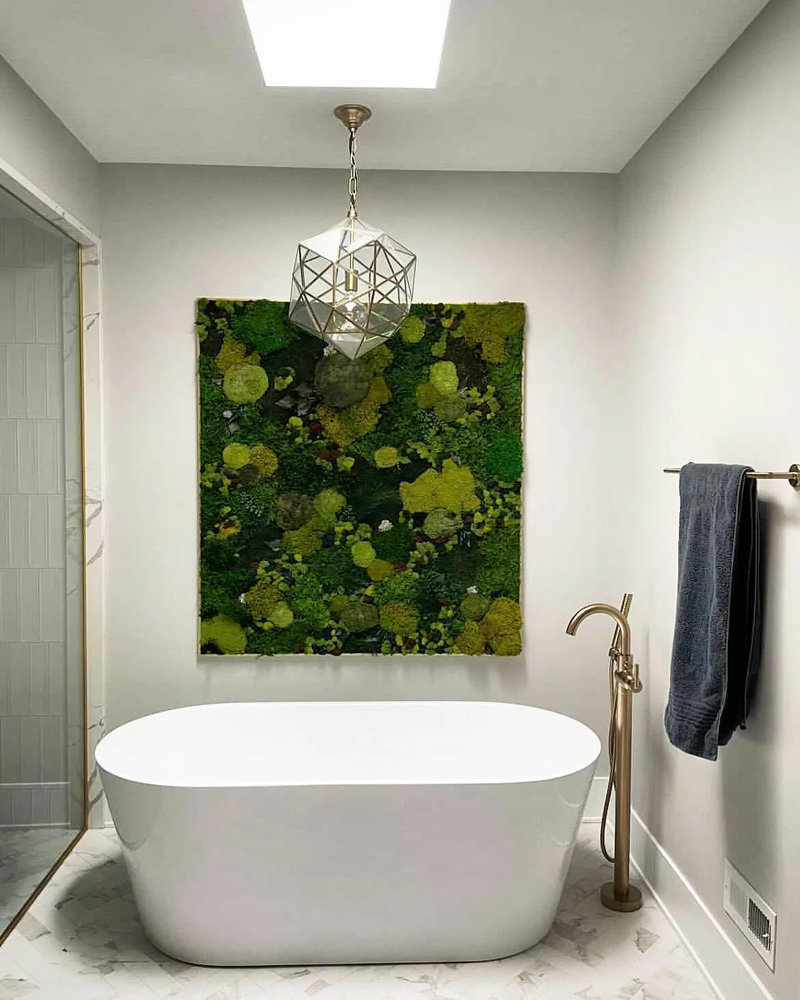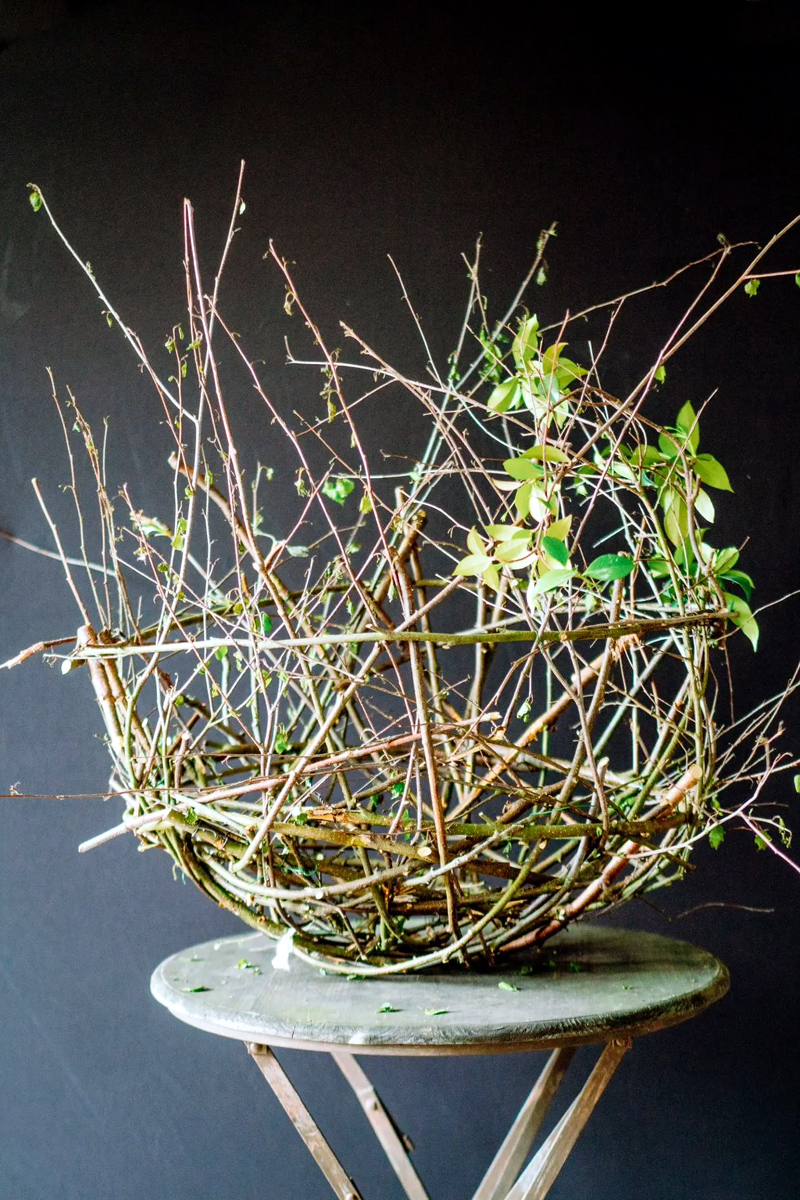![[feature] 7 Creative Ways to Display Plants and Flowers In Your Space](https://blogger.googleusercontent.com/img/b/R29vZ2xl/AVvXsEhFgbg5Hd2yVa6kSyNgfPWgeqrdxydO2w0HGpJBYVht2yUSMBUyf_kAY_TUrCAVDaZqedYKMYSuhRMeXdAu7ODOec_mwS1hWngpDU5OyXBvX2IiSowO67tw_lCiAhGfEHPpztRkw6dKKWFGy9cOSTCE4X5cNUxce_CtexZ08HMNM9fNhkWZQ4SuCyha/s16000/Life%20Hacks.jpg) |
| © Provided by Architectural Digest |
If you’re in on the flower and plant game, you probably already know about this year’s trending florals and have maybe even designed a few of your own arrangements. Maybe you’ve started naming some of your houseplants and love the sense of responsibility you get from caring for that fiddle-leaf fig on your balcony garden. (As for the most advanced owners, you’re off collecting rare plants.) Whatever level you’re on, you obviously make sure that all of your plants and flowers get the best of everything: from extra lighting to plenty of water.
But have you ever thought about the way you present your plants and flowers in a space, as in the objects you use to display them? Don’t get us wrong, we love shopping for pots and vases as much as the next person, but they’re not the only vessels that can add a pop of color, life, and vibrancy into a room. To give you some ideas, we spoke with eight florists about all the ways they think outside of the pot.
Read More: 5 Easy Ways to Add Flowers to Your Front Porch
Look for fake or dried flowers
First things first, we have to address the reality that comes with alternative ways of displaying flowers. For the most part, if your flowers aren’t in vases with water, you’ll have to use dried ones or fake florals. Luckily, “there are so many nice artificial ones out there, nowadays, that look so realistic,” says Heather Wingate, a wedding and special events florist based in Crown Point, Indiana. With a few notable exceptions, like air plants, the same is true for plants.If you’re interested in recreating any of these chic designs, you’ll likely want to start by searching for some faux greenery and blossoms. You can also hit up your favorite flower shop for some dried blooms, or even grow and immortalize them yourself.
Floating Arbors
Heather recently uploaded a video on TikTok showing a floating arbor she designed with plants and flowers from her yard. Working in the wedding industry, these unique flower arrangements aren’t unusual for her. “People get married under it if they want a floating arch,” she says. However, it’s also something anyone could replicate in their home for a more permanent display. The one that Heather made, which used live flowers, died in just a couple of hours. “I could see people doing this for a photo op or using silk flowers for something more permanent,” she adds.Most of these displays are made with chicken wire and fishing line, which are basically florists’ secret weapons when it comes to hanging installations. The chicken wire is flexible enough that it can be molded into various shapes, and fishing line has the perfect balance between strength and invisibility. It’s easy to shape the chicken wire into various shapes, so long as it has a tunnel-like interior so you can thread the plants through it. “Then, the stems become interlocked as you push them in,” she adds.
As a general rule of thumb, Heather suggests using three different types of greenery if you want to create something similar. “All three need to have a different leaf size, shape, or texture for interest,” she recommends.
 |
| © Provided by Architectural Digest |
Hanging florals
Similarly, Amanda Mota and Jp Guay used fishing lines to create a cascading floral installation in their photo studio, Post Creative Studio. Packed with midcentury pieces like Cesca chairs and vintage teak, the falling flowers are just another beautiful addition to the sunbathed studio. “We installed a grid on the ceiling using hooks people use for hanging plants or light fixtures,” Amanda says. The grid is about four inches below the ceiling; then, they attached the fishing lines with flowers, every two grids. “It’s probably about a foot between each string,” she adds.In the middle, they left a four-by-four-foot square blank so that people could stand in the middle of the flowers to experience the project from the inside. “You can’t really see the opening from the outside because there are so many flowers,” she explains. They’ve also done something similar to frame an early 2000s IKEA Storvik Rattan Cane Lounge Chair by Carl Öjerstam.
Pampas clouds
“The best thing about dried flowers is that they are extremely versatile and can be used to create many different flower pieces,” says Rochelle Moseley, owner of Jasmine Blooms. Using dried flowers opens up even more possibilities for innovative flower displays, and believe us when we say these blooms are making a comeback in the home and design space.For a big statement, consider a pampas cloud, which is like a flower chandelier. “Looking at them is like an explosion of pampas grass, which is very eye-catching,” Rochelle says, noting that these designs also often have other stems in them to add layers, texture, color, and visual interest.
Usually, pampas clouds are styled as centerpieces, and Rochelle explains that these hanging versions are called 360 clouds since they can be seen from all angles. Alternatively, they can be mounted on walls for homes with less space, in which case they’re referred to as 180 pieces.
Though Rochelle says there is “no limit” to how pampas clouds can make their mark on a home, she explains it’s really common to see 360 clouds in entryways or above a dining room table. “A 180-degree display can be placed above a mantelpiece, above the headboard of a bed, as the focal point of a feature wall, or even attached to a floor-standing mirror,” she offers.
 |
| © Provided by Architectural Digest |
Flower baubles
Imogen Stuckes, founder of Flowers by Imogen, says flower baubles or ornaments make for delicate and personalized ways to show off some of your favorite blooms. Somewhat small flowers like daisies, lavender, strawflowers, or small stems of gypsophila work best in these bulbs, as they’re the easiest to put inside. “They can look sculptural, too,” Imogen says. “As if they’re floating in the air.”She recommends searching for glass baubles over plastic ones, as they tend to look more sophisticated. “I think they look really nice hanging from some branches in a vase, on door or cupboard handles, or on the end of curtain rails,” she says.
Moss and plant walls
Not to be confused with living walls, which are made with living plants and need water and care, moss art or moss walls are relatively easy and low-maintenance ways to add a splash of greenery into a room. They’re made with various preserved mosses and other natural elements and also have great benefits, says Celia White, artist and owner of the Etsy shop, WhiteHausLiving. “This includes purifying the air of toxins, creating sound barriers to rooms, and creating a stress-free feel,” Celia adds. |
| © Provided by Architectural Digest |
Most moss art can last for over seven years, and with great care up to 25. Since many moss walls are handcrafted by artists, there can be a lot of variety in the style and aesthetic. “There are pieces that are rustic, contemporary, and modern,” Celia explains. “Picking the right moss art is in the eye of the buyer.”
A similar look can also be achieved with fake plants, as Julie Sousa, an interior designer and content creator, demonstrates in her bathroom. “There aren’t any windows in that bathroom so the greenery felt like the perfect way to contrast the moodiness and distract from the lack of windows,” Julie says. She first attached turf to the wall before adding chicken wire and sticking different fake leaves and plants through the wire.
To keep it clean, she uses a Swiffer duster and occasionally sprays water, olive oil, vinegar, and lemon solution before wiping it down and blotting it with a paper towel. “If or when the dust ever gets unmanageable with that method, I built the wall to make it easy to remove the leaves for a good soak,” she says. However, very little dust has accumulated on the wall since she installed it. “It would probably be a once-a-year kind of thing,” she explains.
Organic vessels
Blooming Haus, a London-based floral studio that specializes in alternative ways to display their designs, borrowed from the art of basketry in the past to make unique, organic vessels in which to display florals. |
| © Provided by Architectural Digest |
“We used fresh willow,” says cofounder Michal Kowalski. These branches were weaved and pulled together, similar to the way baskets are made, until the right tension was achieved. “To contrast the willow, we added a summer lilac placed at a horizontal,” Michal explains.
If you want to create something similar, he suggests submerging the twigs or sticks in warm water for 30 minutes to 24 hours to soften them, which will make them more flexible. “Such pretreated and preconditioned materials are easy to work with, dry very well, and keep the shape afterward,” he adds, noting that you can expect something like this to last for years.
See more at Architectural Digest






















